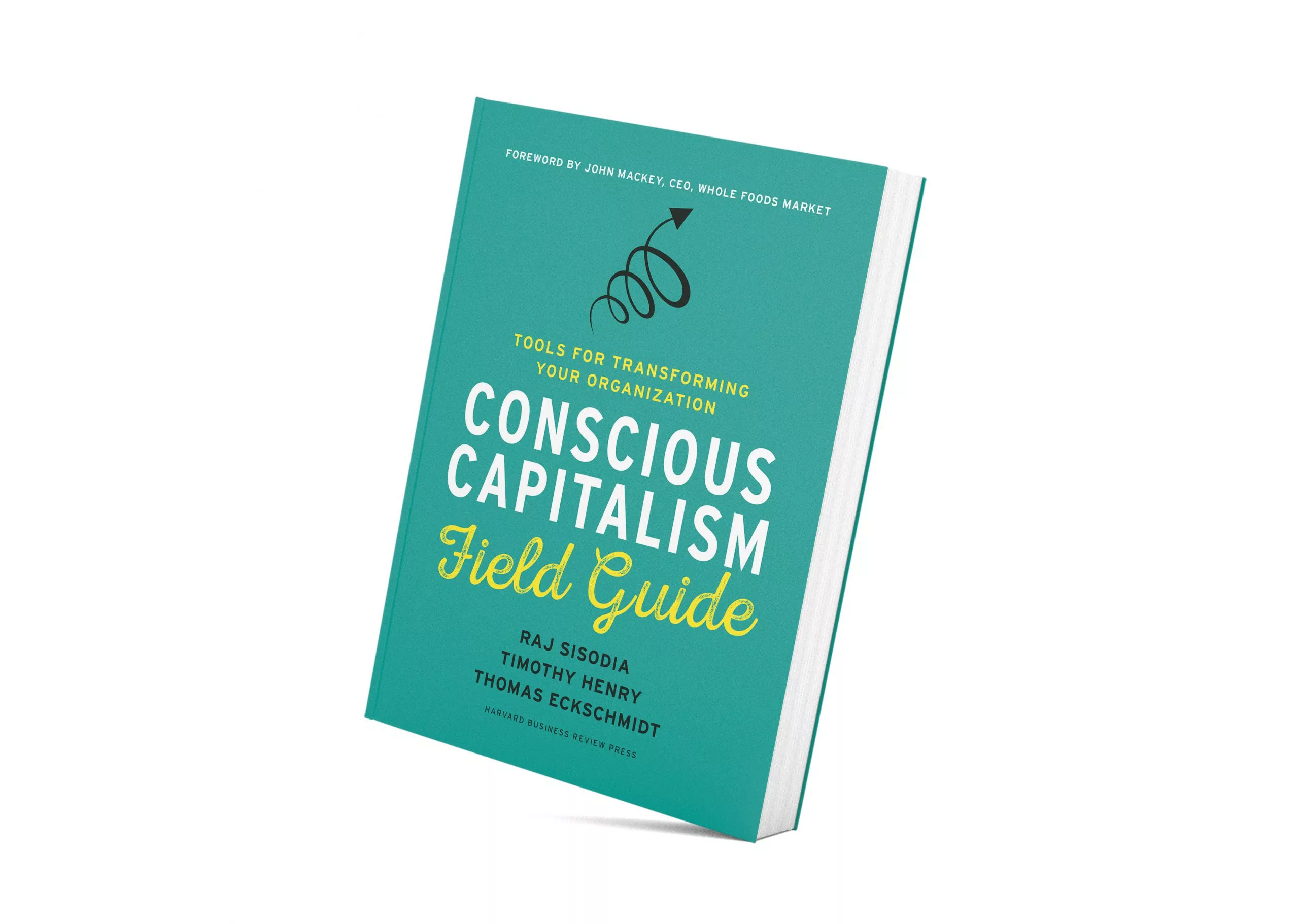For far too long, the conventional wisdom has been that the purpose of business is to maximize returns for shareholders. Business thinkers and leaders of highly successful companies are coming to realize that this way of thinking is flawed and harmful. The first tenet of Conscious Capitalism — a philosophy that provides an alternative approach to the essential pursuit of profits, one that emphasizes ideas like trust, collaboration, and compassion — is that a business must have a higher purpose, distinct from making money. The simplest way to explain purpose is that it is a definitive statement about the difference you are trying to make in the world.
Purpose fosters meaningful innovations and visionary ideas and helps your business navigate turbulent times. It injects greater power into your brand’s message, helps attract the right talent, contributes to personal fulfillment and a life well lived, and generates higher financial results in the long run.
 The Qualities of a Compelling Purpose
The Qualities of a Compelling Purpose
While there are as many potential purposes as there are companies, great purposes have some common characteristics. We capture several of these qualities in the acronym HEALING (heroic, evolving, aligning, loving, inspiring, natural, and galvanizing).
In a world filled with suffering and ill health, healing is noble work. A conscious business creates value by meeting some real, tangible needs of its stakeholders. By doing so, it improves the quality of their existence and makes them better off than they were before. It alleviates suffering and brings more joy, with positive impacts on stakeholders’ physical, emotional, and spiritual wellbeing. Ultimately, we believe, every great purpose must be a healing purpose.
HEALING also represents seven essential qualities of a great purpose:
Heroic: Any worthy purpose has the potential to be heroic, to have a positive transformational impact on the world, affecting not only the company’s stakeholders but also its industry and perhaps even society at large.
Evolving: A conscious business aligns its purpose with the evolutionary impulses of its times. As we humans progress on our journey toward greater consciousness and higher states of being, companies will have to adapt and elevate their purposes to remain in harmony with our evolving aspirations and motivations.
Aligning: A great purpose acts like a powerful magnet that aligns all stakeholders. Stakeholders retain their distinctive roles and identities, but also voluntarily become part of a harmonious whole. The aligning power of a great purpose largely eliminates the conflicts that commonly arise between stakeholders and enables the discovery of win–win resolutions when conflicts do crop up. When they share a common purpose, stakeholders literally cease to be at cross-purposes with one another.
Loving: People are increasingly recognizing the tremendous power and centrality of love in all human endeavors, especially in business. A company’s purpose must emanate from the deep reservoir of love and caring largely untapped in most of us. A purpose built on love and care creates a powerful and vital force throughout the organization. It is in harmony with the deepest essence of what it means to be human.
Inspiring: A great purpose inspires all the stakeholders of an enterprise to rise above their self-imposed limitations and self-serving agendas and strive for the seemingly impossible. It electrifies and animates the organization, giving it a sense of urgency and focus.
Natural: Every great purpose must reflect a mindset of living in harmony with nature rather than conquering or dominating it. A conscious business is akin to a sailor who continuously adapts to the environment. Such a sailor draws the power to move the vessel forward from the wind and current, whose energy is boundless. Yet, he or she can move the vessel in any direction desired.
Galvanizing: A great purpose is not just conceptually and emotionally appealing; it moves people to action. It embodies “the fierce urgency of now,” to use a phrase of Martin Luther King, Jr.’s.
Discovering Your Purpose
Here is a series of exercises to help you uncover your organization’s purpose. These exercises will get you and your team to think creatively and broadly and to analyze and understand what’s really special about your company. With a little excavating, some structured questioning, and a little inspiration, you can discover (or rediscover) the authentic purpose at the heart of your organization.
You should do this exercise in conjunction with your leadership team. Each member of the team should answer the questions individually first; you should then come together to discuss and integrate your perspectives into a single set of responses. As the leader, you need to listen more than speak. If you state your opinion or position too soon, other members of the team might be tempted to fall in line with your thinking. Such groupthink diminishes the value of bringing in diverse perspectives from all the members of the team.
For the purpose-discovery exercises here, we recommend reaching beyond the leadership team to include a cross-section of 20 to 30 highly engaged people from across the organization. For some of the questions, you should include long-term customers and suppliers as well (these questions will be evident).
Let’s start this journey from the past forward and explore the origins of what you do.
1 // Revisit Your Past
Explore the genesis of the organization. Talk to the founders, review the founding documents, look for news and recordings from the time the company was created, and find the motivation that was present at the inception. If the founders are no longer part of the leadership team but are still alive, this is a great opportunity to invite them to share their story of why they created the business.
Explore the following questions to revisit your past:
• Why was the organization originally founded?
• What were the guiding principles that this organization was founded on?
• What spirit or intention must be preserved and captured in our purpose at all cost?
2 // Contrast Your Successes and Failures
Deconstruct your successes and failures — move beyond obvious variables to find both the tangible and intangible factors that are present when you are at your best and when your people are proudest of the organization. Notice where your energy and talent naturally tend to gravitate.
Answer the following questions to explore insights from your successes and failures:
• When we are at our absolute best, what is going on?
• When we love what we are doing, what is going on?
• When we’re failing, just getting by, in a slump, or not that interested in our work, what is going on?
3 // Don’t Think Different — Think Difference
Very often, companies spend an enormous amount of time and energy trying to differentiate themselves from the competition through their unique selling propositions. Rather than battling it out in the land of attributes, turn your attention away from being different just for the sake of being different, and focus on what difference you’re trying to make. What difference are you ultimately trying to make in the world? When you can clearly answer that question, it becomes a powerful filter to determine where you should or shouldn’t be spending your time, energy, and resources.
Ask yourself the following questions:
• What is the ultimate impact we hope to make?
• When we’re at our best, what difference do we make in the lives of the people we serve?
4 // Find the Intersection of Strengths, Passion, Impact, and Reward
Your purpose resides in the intersection of your strengths, your passions, the company’s impact, and the rewards your stakeholders receive from your company. Knowing what intrinsically motivates your people, what you’re built to do better than anyone else, and where you can deploy that passion and talent to serve a need or solve a problem in the world is extremely powerful.
Ask yourself several questions:
• What is our organization’s greatest strength; what do we have the potential to be the best at in the world?
• What are we most passionate about? What do we love the most about what we do?
• Where can we have the most meaningful impact? Which big problems or needs in the world are we capable of and passionate about solving?
• What would people reward us for? What products and services would our customers happily purchase from us?
5 // Talk to Your Fans
Talk to your most evangelical employees, your most loyal die-hard customers, your vendor–partners who would do anything for you, and community leaders who love having your business in their community. Find out why they love your organization. What do they believe you stand for? What difference do they believe you make in their lives? These stakeholders know the real deal and are ultimately the heartbeat of the organization.
Ask your fans several questions:
• What do you love most about this company or this brand?
• What does this company or brand do for you that no one else does?
• If this company or brand ceased to exist, what would be lost? What would you miss the most?
Look back at your answers, and make sure the ideas collected are what the fans believe you offer and not what your team would like to hear from them or what you think you are selling them. The truth in these answers could lead you to a much stronger position. Consider using independent researchers to collect this feedback.
6 // Ladder Up
What’s the ultimate value of what you’re offering? At the most basic level, describe what you do. Moving up the ladder, identify the functional benefits of what you offer. Next, identify the emotional benefits of what you deliver. With these benefits mapped out, ask yourself,
“What’s the ultimate value of these benefits in the life of the customers we’re trying to serve?”
Ask yourself these questions:
• At the most basic level, what do we have to offer people?
• Functional benefit: what does our offering enable people to do?
• Emotional benefit: how does our offering make people feel?
• Ultimate value: what is the ultimate value of these functional and emotional benefits in their lives?
7 // Listen to Your Heart
In the end, purpose is a heart thing. What is your heart calling you to do? What problem, need, or other issue do you have a burning desire to address through your business? No market research study or SWOT (strengths, weaknesses, opportunities, and threats) analysis can dictate what your purpose should be. A purpose is only right and effective if it resonates with the leaders and employees of an organization in a deep and meaningful way.
To better listen to your heart, ask yourself these questions:
• What is your heart calling you to do?
• What is absolutely essential for the purpose to be truly meaningful?
Next steps
In these exercises, you explored the different dimensions of your organization’s purpose. This is preparation — a warm-up to work on articulating your purpose. For the next steps and to dive into a deeper expression of purpose, check out “Conscious Capitalism Field Guide: Tools for Transforming Your Organization.”
This article was adapted from the Harvard Business Review Press book “Conscious Capitalism Field Guide: Tools for Transforming Your Organization” by Raj Sisodia, Timothy Henry, and Thomas Eckschmidt, with Jessica Agneessens and Haley Rushing (co-founder and chief “purposologist” of the Purpose Institute, Austin, Texas; thepurposeinstitute.com).

 The Qualities of a Compelling Purpose
The Qualities of a Compelling Purpose 



